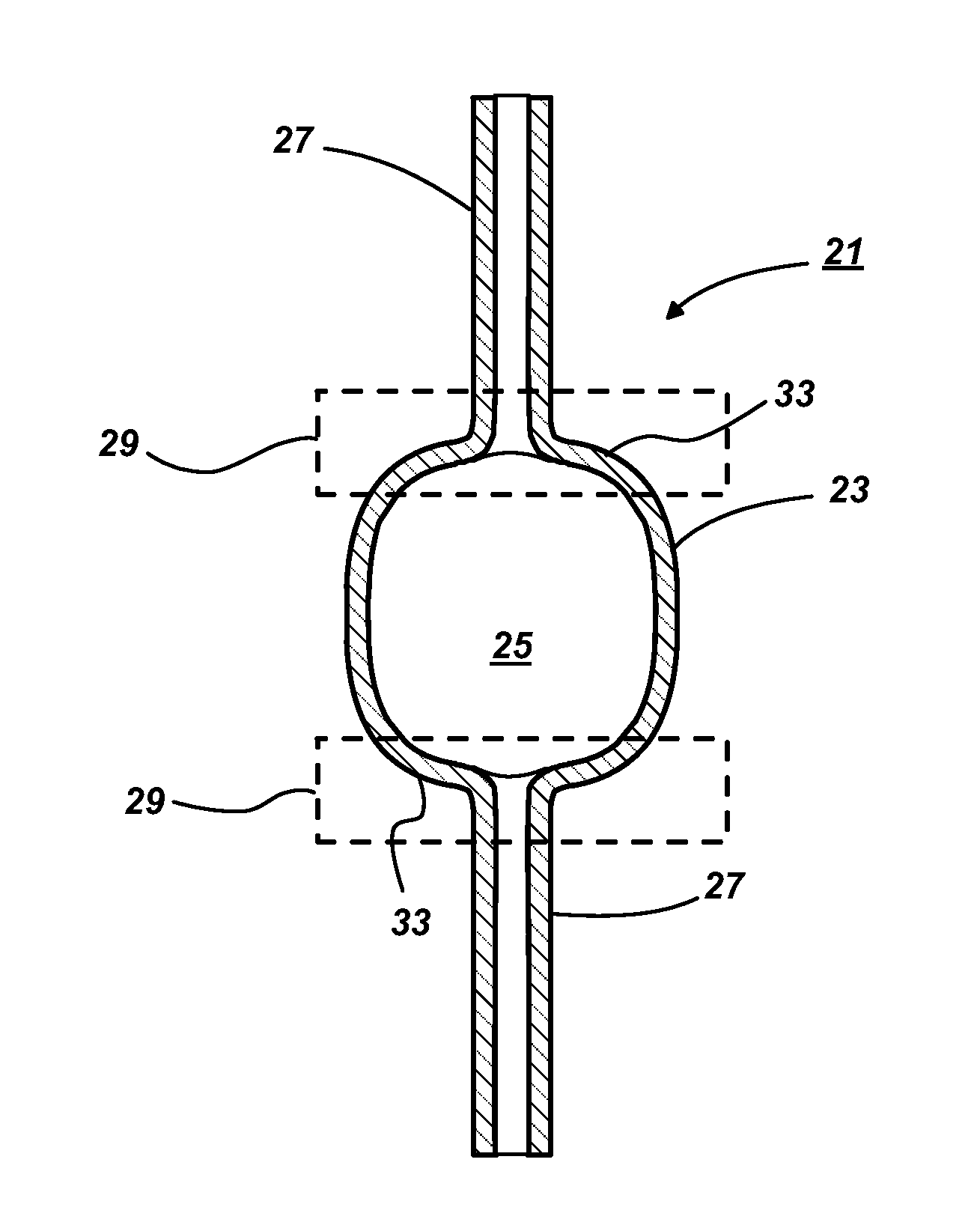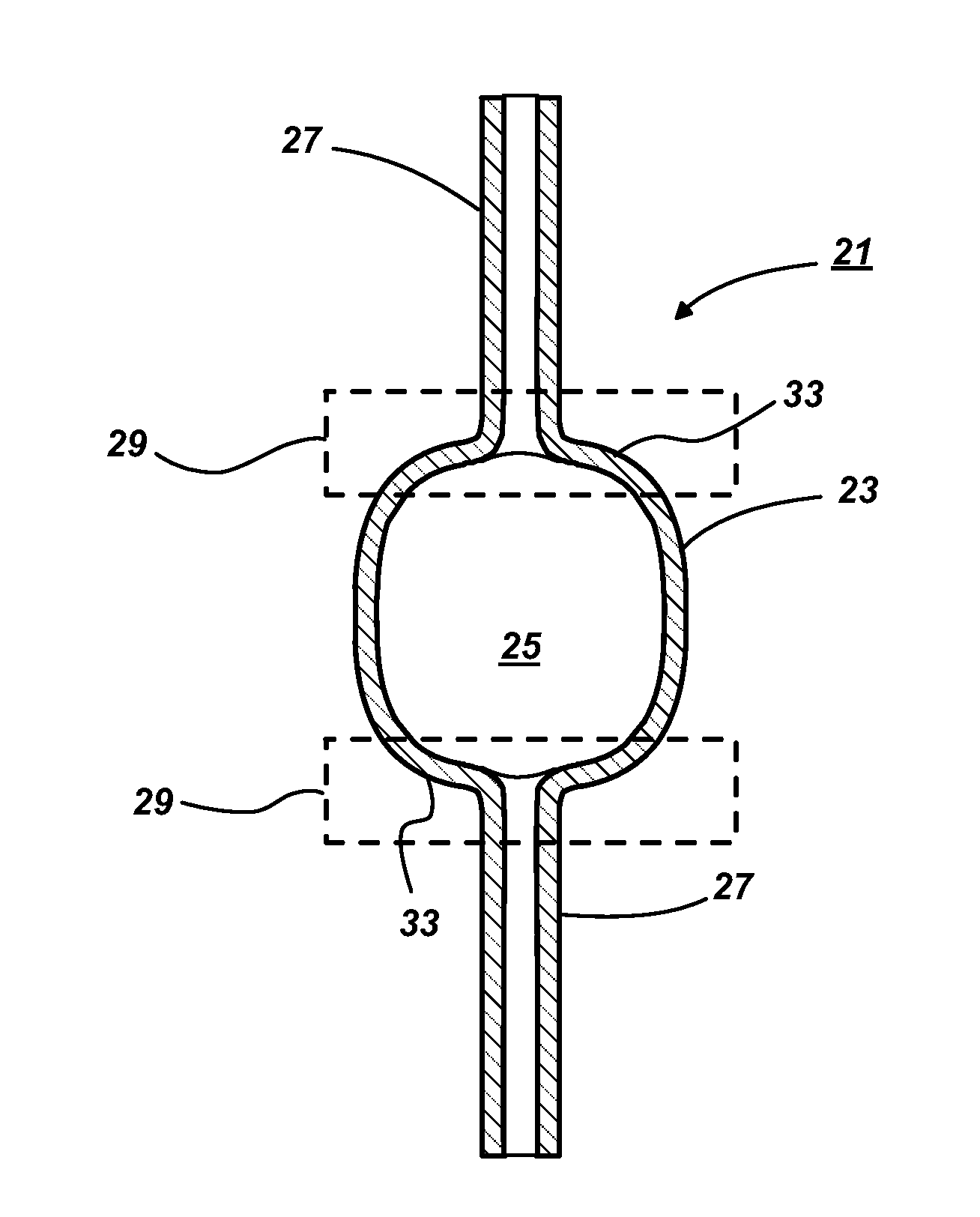Ceramic discharge vessel having an opaque zone and method of making same
a ceramic discharge vessel and opaque zone technology, applied in the manufacture of cold cathodes, electrode systems, electric discharge tubes/lamps, etc., can solve the problems of high emissivity, achieve greater wall temperature, increase wall temperature, and lower emissivity
- Summary
- Abstract
- Description
- Claims
- Application Information
AI Technical Summary
Benefits of technology
Problems solved by technology
Method used
Image
Examples
examples
[0021]High purity (≧99.97% pure) Al2O3 powder was used as the starting powder. The powder contained finely divided Al2O3 particles with a crystallite size of 0.05 μm, a mean specific surface area of 30-6 m2 / g, and an average particle size of 0.45 μm. The sintering aids were based on the MgO+ZrO2+Y2O3 system. The alumina powder was mixed with an organic binder to form the discharge vessel shape. Prefiring of the green shapes was conducted at 850-1350° C. in air to remove the organic binder.
[0022]In order to form the opaque zones, an aqueous solution containing 10 weight percent (wt. %) polyvinyl alcohol was painted onto the targeted area of the air-prefired discharge vessels using a small brush. The painted discharge vessels were placed in vacuum desiccator to allow the 10 wt. % polyvinyl alcohol-water solution to soak into the alumina and dry. These steps were repeated three times to fully impregnate the wall of the prefired discharge vessel. The painted parts were then placed verti...
PUM
| Property | Measurement | Unit |
|---|---|---|
| wall temperature | aaaaa | aaaaa |
| temperatures | aaaaa | aaaaa |
| emissivity | aaaaa | aaaaa |
Abstract
Description
Claims
Application Information
 Login to View More
Login to View More - R&D
- Intellectual Property
- Life Sciences
- Materials
- Tech Scout
- Unparalleled Data Quality
- Higher Quality Content
- 60% Fewer Hallucinations
Browse by: Latest US Patents, China's latest patents, Technical Efficacy Thesaurus, Application Domain, Technology Topic, Popular Technical Reports.
© 2025 PatSnap. All rights reserved.Legal|Privacy policy|Modern Slavery Act Transparency Statement|Sitemap|About US| Contact US: help@patsnap.com


